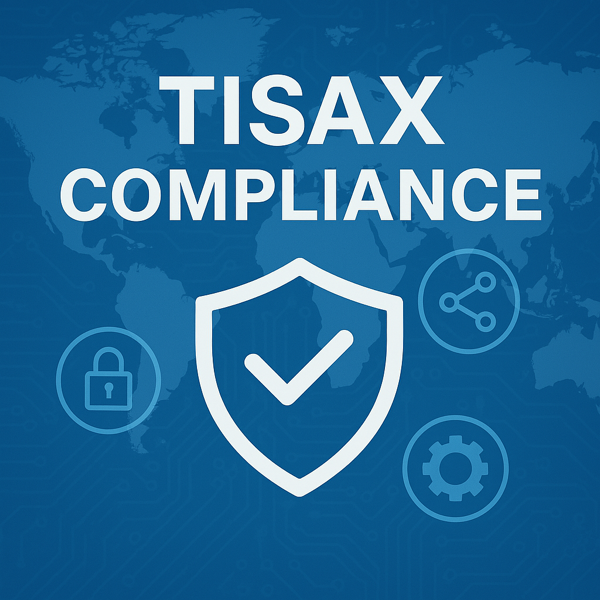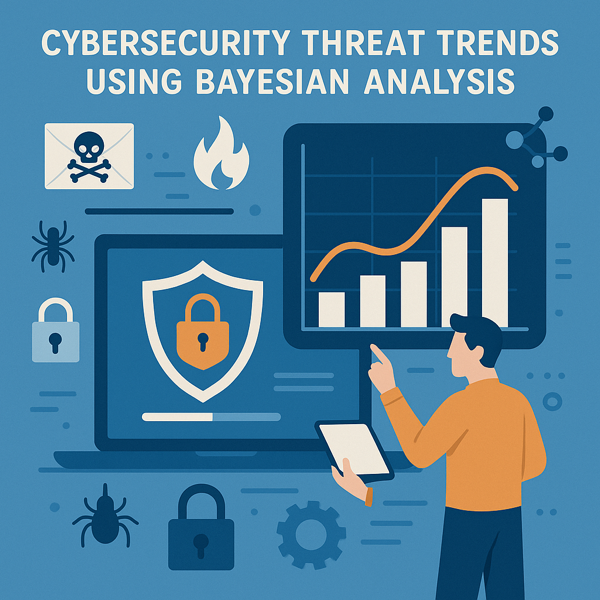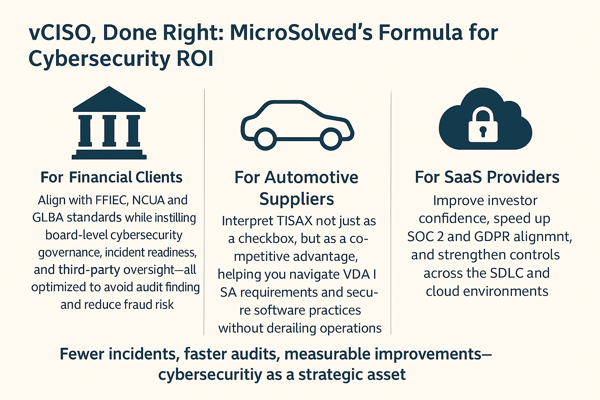Imagine embarking on a financial journey where the conventional intermediaries have vanished, replaced by blockchain protocols and smart contracts. This realm is known as Decentralized Finance, or DeFi, an innovative frontier reshaping the monetary landscape by offering alternative financial solutions. As thrilling as this ecosystem is with its rapid growth and potential for high returns, it is riddled with complexities and risks that call for a thorough understanding and strategic assessment.

Decentralized Finance empowers individuals by eliminating traditional gatekeepers, yet it introduces a unique set of challenges, especially in terms of risk. From smart contract vulnerabilities to asset volatility and evolving regulatory frameworks, navigating the DeFi landscape requires a keen eye for potential pitfalls. Understanding the underlying technologies and identifying the associated risks critically impacts both seasoned investors and new participants alike.
This article will serve as your essential guide to effectively navigating DeFi, delving into the intricacies of risk assessment within this dynamic domain. We will explore the fundamental aspects of DeFi, dissect the potential security threats, and discuss advanced technologies for managing risks. Whether you’re an enthusiast or investor eager to venture into the world of Decentralized Finance, mastering these essentials is imperative for a successful and secure experience.
Understanding Decentralized Finance (DeFi)
Decentralized Finance, or DeFi, is changing how we think about financial services. By using public blockchains, DeFi provides financial tools without needing banks or brokers. This makes it easier for people to participate in financial markets. Instead of relying on central authorities, DeFi uses smart contracts. These are automated programs on the blockchain that execute tasks when specific conditions are met. They provide transparency and efficiency. Nonetheless, DeFi has its risks. Without regulation, users must be careful about potential fraud or scams. Each DeFi project brings its own set of challenges, requiring specific risk assessments different from traditional finance. Understanding these elements is key to navigating this innovative space safely and effectively.
Definition and Key Concepts
DeFi offers a new way to access financial services. By using public blockchains, it eliminates the need for lengthy processes and middlemen. With just an internet connection, anyone can engage in DeFi activities. One crucial feature of DeFi is the control it gives users over their assets. Instead of storing assets with a bank, users keep them under their own control through private keys. This full custody model ensures autonomy but also places the responsibility for security on the user. The interconnected nature of DeFi allows various platforms and services to work together, enhancing the network’s potential. Despite its promise, DeFi comes with risks from smart contracts. Flaws in these contracts can lead to potential losses, so users need to understand them well.
The Growth and Popularity of DeFi
DeFi has seen remarkable growth in a short time. In just two years, the value locked in DeFi increased from less than $1 billion to over $100 billion. This rapid expansion shows how appealing DeFi is to many people. It mimics traditional financial functions like lending and borrowing but does so without central control. This appeals to both individual and institutional investors. With the DeFi market projected to reach $800 billion, more people and organizations are taking notice. Many participants in centralized finance are exploring DeFi for trading and exchanging crypto-assets. The unique value DeFi offers continues to attract a growing number of users and investors, signifying its importance in the financial landscape.
Identifying Risks in DeFi
Decentralized finance, or DeFi, offers an exciting alternative to traditional finance. However, it also presents unique potential risks that need careful evaluation. Risk assessments in DeFi help users understand and manage the diverse threats that come with handling Digital Assets. Smart contracts, decentralized exchanges, and crypto assets all contribute to the landscape of DeFi, but with them come risks like smart contract failures and liquidity issues. As the recent U.S. Department of the Treasury’s 2023 report highlights, DeFi involves aspects that require keen oversight from regulators to address concerns like illicit finance risks. Understanding these risks is crucial for anyone involved in this evolving financial field.
Smart Contract Vulnerabilities
Smart contracts are the backbone of many DeFi operations, yet they carry significant risks. Bugs in the code can lead to the loss of funds for users. Even a minor error can cause serious vulnerabilities. When exploited, these weaknesses allow malicious actors to steal or destroy the value managed in these contracts. High-profile smart contract hacks have underscored the urgency for solid risk management. DeFi users are safer with protocols that undergo thorough audits. These audits help ensure that the code is free from vulnerabilities before being deployed. As such, smart contract security is a key focus for any DeFi participant.
Asset Tokenomics and Price Volatility
Tokenomics defines how tokens are distributed, circulated, and valued within DeFi protocols. These aspects influence user behavior, and, in turn, token valuation. DeFi can suffer from severe price volatility due to distortions in supply and locked-up tokens. Flash loan attacks exploit high leverage to manipulate token prices, adding to instability. When a significant portion of tokens is staked, the circulating supply changes, which can inflate or deflate token value. The design and incentives behind tokenomics need careful planning to prevent economic instability. This highlights the importance of understanding and addressing tokenomics in DeFi.
Pool Design and Management Risks
Managing risks related to pool design and strategies is crucial in DeFi. Pools with complex yield strategies and reliance on off-chain computations introduce additional risks. As strategies grow more complex, so does the likelihood of errors or exploits. Without effective slashing mechanisms, pools leave users vulnerable to losses. DeFi risk assessments stress the importance of robust frameworks in mitigating these threats. Additionally, pools often depend on bridges to operate across blockchains. These bridges are susceptible to hacks due to the significant value they handle. Therefore, rigorous risk management is necessary to safeguard assets within pool operations.
Developing a Risk Assessment Framework
In the realm of decentralized finance, risk assessment frameworks must adapt to unique challenges. Traditional systems like Enterprise Risk Management (ERM) and ISO 31000 fall short in addressing the decentralized and technology-driven features of DeFi. A DeFi risk framework should prioritize identifying, analyzing, and monitoring specific risks, particularly those associated with smart contracts and governance issues. The U.S. Department of Treasury has highlighted these challenges in their Illicit Finance Risk Assessment, offering foundational insights for shaping future regulations. Building a robust framework aims to foster trust, ensure accountability, and encourage cooperation among stakeholders. This approach is vital for establishing DeFi as a secure alternative to traditional finance.
General Risk Assessment Strategies
Risk assessment in DeFi involves understanding and managing potential risks tied to its specific protocols and activities. Due diligence and using effective tools are necessary for mitigating these risks. This process demands strong corporate governance and sound internal controls to manage smart contract, liquidity, and platform risks. Blockchain technology offers innovative strategies to exceed traditional risk management methods. By pairing risk management with product development, DeFi protocols can make informed decisions, balancing risk and reward. This adaptability is essential to address unique risks within the DeFi landscape, ensuring safety and efficiency in financial operations.
Blockchain and Protocol-Specific Evaluations
Evaluating the blockchain and protocols used in DeFi is essential for ensuring security and robustness. This includes assessing potential vulnerabilities and making necessary improvements. Formal verification processes help pinpoint weaknesses, enabling protocols to address issues proactively. Blockchain’s inherent properties like traceability and immutability aid in mitigating financial risks. Effective governance, combined with rigorous processes and controls, is crucial for managing these risks. By continuously reviewing and improving protocol security, organizations can safeguard their operations and users against evolving threats. This commitment to safety builds trust and advances the reliability of DeFi systems.
Adapting to Technological Changes and Innovations
Keeping pace with technological changes in DeFi demands adaptation from industries like accounting. By exploring blockchain-based solutions, firms can enhance the efficiency of their processes with real-time auditing and automated reconciliation. Educating teams about blockchain and smart contracts is vital, as is understanding the evolving regulatory landscape. Forming partnerships with technology and cybersecurity firms can improve capabilities, offering comprehensive services in DeFi. New risk management tools, such as decentralized insurance and smart contract audits, show a commitment to embracing innovation. Balancing technological advances with regulatory compliance ensures that DeFi systems remain secure and reliable.
Security Threats in DeFi
Decentralized Finance, or DeFi, is changing how we think about finance. It uses blockchain technology to move beyond traditional systems. However, with innovation comes risk. DeFi platforms are susceptible to several security threats. The absence of a centralized authority means there’s no one to intervene when problems arise, such as smart contract bugs or liquidity risks. The U.S. Treasury has even noted the sector’s vulnerability to illicit finance risks, including criminal activities like ransomware and scams. DeFi’s technological complexity also makes it a target for hackers, who can exploit weaknesses in these systems.
Unsecured Flash Loan Price Manipulations
Flash loans are a unique but risky feature of the DeFi ecosystem. They allow users to borrow large amounts of crypto without collateral, provided they repay immediately. However, this opens the door to scams. Malicious actors can exploit these loans to manipulate token prices temporarily. By borrowing and swapping large amounts of tokens in one liquidity pool, they can alter valuations. This directly harms liquidity providers, who face losses as a result. Moreover, these manipulations highlight the need for effective detection and protection mechanisms within DeFi platforms.
Reentrancy Attacks and Exploits
Reentrancy attacks are a well-known risk in smart contracts. In these attacks, hackers exploit a vulnerability by repeatedly calling a withdrawal function. This means they can drain funds faster than the system can verify balances. As a result, the smart contract may not recognize the lost funds until it’s too late. This type of exploit can leave DeFi users vulnerable to significant financial losses. Fixing these vulnerabilities is crucial for the long-term security of DeFi protocols. Preventing such attacks will ensure greater trust and stability in the decentralized financial markets.
Potential Phishing and Cyber Attacks
Cyber threats are not new to the financial world, but they are evolving in the DeFi space. Hackers are constantly looking for weaknesses in blockchain technology, especially within user interfaces. They can carry out phishing attacks by tricking users or operators into revealing sensitive information. If successful, attackers gain unauthorized access to crypto assets. This can lead to control of entire protocols. Such risks demand vigilant security practices. Ensuring user protection against cybercrime is an ongoing challenge that DeFi platforms must address. By improving security measures, DeFi can better safeguard against potential cyber threats.
Regulatory Concerns and Compliance
Decentralized finance (DeFi) has grown rapidly, but it faces major regulatory concerns. The US Treasury has issued a risk assessment that highlights the sector’s exposure to illicit activities. With platforms allowing financial services without traditional banks, there is a growing need for regulatory oversight. DeFi’s fast-paced innovations often outstrip existing compliance measures, creating gaps that malicious actors exploit. Therefore, introducing standardized protocols is becoming crucial. The Treasury’s assessment serves as a first step to understanding these potential risks and initiating dialogue on regulation. It aims to align DeFi with anti-money laundering norms and sanctions, addressing vulnerabilities tied to global illicit activities.
Understanding Current DeFi Regulations
DeFi platforms face increasing pressure to comply with evolving regulations. They use compliance tools like wallet attribution and transaction monitoring to meet anti-money laundering (AML) and Know Your Customer (KYC) standards. These tools aim to combat illicit finance risks, but they make operations more complex and costly. Regulatory scrutiny requires platforms to balance user access with legal compliance. As regulations stiffen, platforms may alienate smaller users who find these measures difficult or unnecessary. To stay competitive and compliant, DeFi platforms must adapt continuously, often updating internal processes. Real-time transaction visibility on public blockchains helps regulatory bodies enforce compliance, offering a tool against financial crimes.
Impact of Regulations on DeFi Projects
Regulations impact DeFi projects in various ways, enhancing both potential risks and opportunities. The absence of legal certainty in DeFi can worsen market risks, as expected regulatory changes may affect project participation. The US Treasury’s risk assessment pointed out DeFi’s ties to money laundering and compliance issues. As a result, anti-money laundering practices and sanctions are gaining importance in DeFi. Increased scrutiny has emerged due to DeFi’s links to criminal activities, including those related to North Korean cybercriminals. This scrutiny helps contextualize and define DeFi’s regulatory risks, starting important discussions before official rules are set. Understanding these dynamics is vital for project sustainability.
Balancing Innovation and Regulatory Compliance
Balancing the need for innovation with regulatory demands is a challenge for DeFi platforms. Platforms like Chainalysis and Elliptic offer advanced features for risk management, but they often come at high costs. These costs can limit accessibility, particularly for smaller users. In contrast, free platforms like Etherscan provide basic tools that might not meet all compliance needs. As DeFi evolves, innovative solutions are needed to integrate compliance affordably and effectively. A gap exists in aligning platform functionalities with user needs, inviting DeFi players to innovate continuously. The lack of standardized protocols demands tailored models for decentralized ecosystems, highlighting a key area for ongoing development in combining innovation with regulatory adherence.
Utilizing Advanced Technologies for Risk Management
The decentralized finance (DeFi) ecosystem is transforming how we see finance. Advanced technologies ensure DeFi’s integrity by monitoring activities and ensuring compliance. Blockchain forensics and intelligence tools are now crucial in tracing and tracking funds within the DeFi landscape, proving vital in addressing theft and illicit finance risks. Public blockchains offer transparency, assisting in criminal activity investigations despite the challenge of pseudonymity. Potential solutions, like digital identity systems and zero-knowledge proofs, work toward compliance while maintaining user privacy. Collaboration between government and industry is key to grasping evolving regulatory landscapes and implementing these advanced tools effectively.
The Role of AI and Machine Learning
AI and machine learning (AI/ML) are making strides in the DeFi world, particularly in risk assessments. These technologies can spot high-risk transactions by examining vast data sets. They use both supervised and unsupervised learning to flag anomalies in real time. This evolution marks a shift toward more sophisticated DeFi risk management systems. AI-powered systems detect unusual transaction patterns that could point to fraud or market manipulation, enhancing the safety of financial transactions. By integrating these technologies, DeFi platforms continue to bolster their security measures against potential risks and malicious actors.
Real-Time Monitoring and Predictive Analytics
Real-time monitoring is crucial in DeFi for timely risk detection. It allows platforms to spot attacks or unusual behaviors promptly, enabling immediate intervention. Automated tools, with machine learning, can identify user behaviors that may signal prepared attacks. Platforms like Chainalysis and Nansen set the benchmark with their predictive analytics, offering real-time alerts that significantly aid in risk management. Users, especially institutional investors, highly value these features for their impact on trust and satisfaction. Real-time capabilities not only ensure better threat detection but also elevate the overall credibility of DeFi platforms in the financial markets.
Enhancing Security Using Technological Tools
DeFi’s growth demands robust security measures to counter potential risks. Tools like blockchain intelligence, such as TRM, evolve to support compliance while maintaining privacy. The use of digital identities and zero-knowledge proofs is crucial in improving user privacy. The U.S. Treasury emphasizes a private-public collaboration to enhance cyber resilience in DeFi. Blockchain’s immutable nature offers a strong foundation for tracking and preventing illicit finance activities. Technological tools like blockchain forensics are vital for ensuring the compliance and integrity of the DeFi ecosystem, providing a level of security that surpasses traditional finance systems.
Strategies for Robust DeFi Risk Management
Decentralized finance, or DeFi, shows great promise, but it comes with risks. Effective DeFi risk management uses due diligence, risk assessment tools, insurance coverage, and careful portfolio risk management. These strategies help handle unique risks such as smart contract and liquidity risks. As DeFi grows, it also faces scrutiny for involvement in illicit finance. This calls for strong risk management strategies to keep the system safe. Smart contract risks are unique to DeFi. They involve threats from potential bugs or exploits within the code. Managing these risks is crucial. Additionally, DeFi must address systemic risk, the threat of an entire market collapse. Lastly, DeFi platforms face platform risk, related to user interfaces and security. These require comprehensive approaches to maintain platform integrity and user trust.
Due Diligence and Thorough Research
Conducting due diligence is essential for effective DeFi risk management. It helps users understand a DeFi protocol before engaging with it. By performing due diligence, users can review smart contracts and governance structures. This contributes to informed decision-making. Assessing the team behind a DeFi protocol, as well as community support, is crucial. Due diligence also gives insights into potential risks and returns. This practice can aid in evaluating the safety and viability of investments. Furthermore, due diligence often includes evaluating the identity and background of smart contract operators. This can be facilitated through Know Your Customer (KYC) services. In doing so, users can better evaluate the potential risks associated with the protocol.
Integrating Insurance Safeguards
DeFi insurance provides a vital layer of protection by using new forms of coverage. Decentralized insurance protocols, like Nexus Mutual and Etherisc, protect against risks like smart contract failures. These systems use pooled user funds for quicker reimbursements, reducing reliance on traditional insurers. This method makes DeFi safer and more transparent. Users can enhance their risk management by purchasing coverage through decentralized insurance protocols. These systems use blockchain technology to maintain transparency. This reassurance boosts user confidence, much like traditional financial systems. Thus, decentralized insurance boosts DeFi’s appeal and safety.
Strategic Partnership and Collaboration
Strategic partnerships strengthen DeFi by pairing with traditional finance entities. DeFi protocols have teamed up with insurance firms to cover risks like smart contract hacks. These collaborations bring traditional risk management expertise into DeFi’s transparent and autonomous world. Partnerships with financial derivatives providers offer hedging solutions. However, they may incur high transaction fees and counterparty risks. Engaging with industry groups and legal experts also helps. It enhances trust and effective compliance risk management within DeFi protocols. Additionally, traditional financial institutions and DeFi are seeking alliances. These collaborations help integrate and manage substantial assets within decentralized finance ecosystems, enriching the DeFi landscape.
Opportunities and Challenges in DeFi
Decentralized finance, or DeFi, is reshaping how financial services operate. By using smart contracts, these platforms enable transactions like lending, borrowing, and trading without needing banks. With these services come unique risks, such as smart contract failures and illicit finance risks. DeFi platforms offer new opportunities but also demand careful risk assessments. Companies might need advisory services from accounting firms as they adopt these technologies. AI and machine learning hold promise for boosting risk management, despite challenges such as cost and data limitations. The US Department of the Treasury’s involvement shows the importance of understanding these risks before setting regulations.
Expanding Global Market Access
DeFi opens doors to global markets by letting companies and investors engage without middlemen. This reduces costs and boosts efficiency. With access to global financial markets, businesses and investors can enjoy economic growth. From lending to trading, DeFi offers users a chance to join in global financial activities without traditional banks. The growth is significant, with DeFi assets skyrocketing to over $100 billion, from under $1 billion in just two years. This surge has widened market access and attracted over a million investors, showcasing its vast potential in global finance.
Seeking Expertise: MicroSolved, Inc.
For those navigating the complex world of decentralized finance, expert guidance can be invaluable. MicroSolved, Inc. stands out as a leading provider of cybersecurity and risk assessment services with a strong reputation for effectively addressing the unique challenges inherent in DeFi ecosystems.
Why Choose MicroSolved, Inc.?
- Industry Expertise: With extensive experience in cybersecurity and risk management, MicroSolved, Inc. brings a wealth of knowledge that is crucial for identifying and mitigating potential risks in DeFi platforms.
- Tailored Solutions: The company offers customized risk assessment services that cater to the specific needs of DeFi projects. This ensures a comprehensive approach to understanding and managing risks related to smart contracts, platform vulnerabilities, and regulatory compliance.
- Advanced Tools and Techniques: Leveraging cutting-edge technology, including AI and machine learning, MicroSolved, Inc. is equipped to detect subtle vulnerabilities and provide actionable insights that empower DeFi platforms to enhance their security postures.
- Consultative Approach: Understanding that DeFi is an evolving landscape, MicroSolved, Inc. adopts a consultative approach, working closely with clients to not just identify risks, but to also develop strategic plans for long-term platform stability and growth.
How to Get in Touch
Organizations and individuals interested in bolstering their DeFi risk management strategies can reach out to MicroSolved, Inc. for support and consultation. By collaborating with their team of experts, DeFi participants can enhance their understanding of potential threats and implement robust measures to safeguard their operations.
To learn more or to schedule a consultation, visit MicroSolved, Inc.’s website or contact their advisors directly at +1.614.351.1237 or info@microsolved.com. With their assistance, navigating the DeFi space becomes more secure and informed, paving the way for innovation and expansion.
* AI tools were used as a research assistant for this content.



 Unlike one-size-fits-all models, our vCISO engagements begin with immersive understanding: of your business model, sector-specific compliance demands (think NCUA/FFIEC for credit unions, TISAX for auto suppliers, GDPR/SOC2 for SaaS), and your organizational risk appetite. From there, we build a living security program that’s actionable, measurable, and defensible under scrutiny.
Unlike one-size-fits-all models, our vCISO engagements begin with immersive understanding: of your business model, sector-specific compliance demands (think NCUA/FFIEC for credit unions, TISAX for auto suppliers, GDPR/SOC2 for SaaS), and your organizational risk appetite. From there, we build a living security program that’s actionable, measurable, and defensible under scrutiny.

